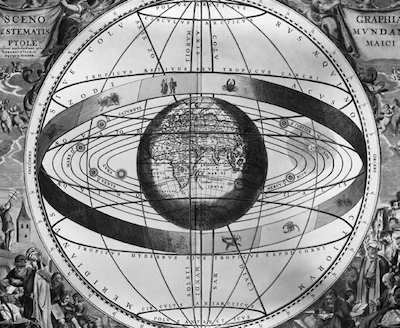Claudius Ptolemy: Ancient Astronomer, Cartographer
Claudius Ptolemy was a widely influential astronomer, geographer, and mathematician in Ancient Greece whose ideas were the standard in those fields for hundreds and hundreds of years. 
As is the case with many people from antiquity, little is known of his early life. He is thought to have born in or around the year 100 and to have been a Roman citizen. He first came to prominence in the city of Alexandria, in Egypt. That city was founded by Alexander the Great a handful of centuries before Ptolemy was born. The Roman Republic conquered Alexandria and then made it into the Empire's second-largest city. Alexandria was known around the world for its expansive Library. Ptolemy studied the writings of scientists from Ancient Greece and from the Ancient Middle East. Building on their work, he wrote a handful of works that remained standard texts in their subject areas for many generations. The most famous of these is likely Almagest, a 13-volume treatise on astronomy that incorporates the theories of others as well as his own ideas on the various celestial bodies known to have existed at that time and their relationship to Earth. He was a dedicated astronomer and made careful notes of observations he made during a 15-year period ending in 141 (including cataloging more Another of Ptolemy's monumental works was Geography. One of his ambitions in this work was to present a map of the entire known world. Building on the work of an earlier cartographer, Marinus of Tyre, he did so, approximating a drawing of all that he knew about the observed world and roughly keeping the relative size and position of everything the same. He did make a few mistakes, as modern geographers discovered, but he did also include a list of 8,000 places around the world, along with their coordinates of latitude and longitude. 
The ancient thinkers made no real distinction between astronomy, the science of the night sky, and astrology, the belief that the movements of such heavenly bodies had a direct effect on what happened on Earth. He systematized the astrological thinking of his day in a four-part treatise known as Tetrabiblos. Other works by Ptolemy included Harmonikon, about music and the mathematical elements of musical scales, and Optica, about the properties of sight. Ptolemy's works and, specifically, his ideas were extremely influential for centuries. The Catholic Church, in particular, embraced the idea of a perfect universe (as created by a perfect God) and actively suppressed and/or punished anyone who spoke out otherwise for a very long time. Hard evidence collected by a number of astronomers during the Scientific Revolution finally rebutted the geocentric theory successfully. Ptolemy's maps and map theory were also the standard for cartographers for many generations.
|
|
Social Studies for Kids
copyright 2002–2025
David White



 than 1,000 stars) before starting to write Almagest. He finished it in 150. Among his predecessors whom he credited were
than 1,000 stars) before starting to write Almagest. He finished it in 150. Among his predecessors whom he credited were 
